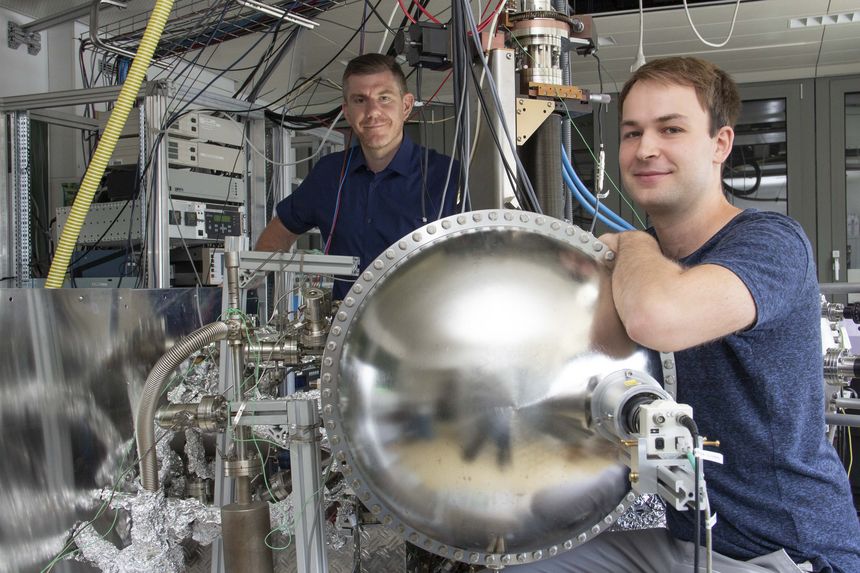
A new technology for improved catalysts was developed by the Institute of Applied Physics at the TU Vienna. Conventional catalyst materials are expensive and lag behind the expectations of researchers in terms of efficiency. This could change with the use of iridium atoms on a specialized iron oxide surface.
Catalysts are chemical substances that boost the reaction speed of a chemical reaction. This acceleration is made possible by lowering the actuation energy. Catalysts are indispensable in the chemical industry and in cars. These have been mandatory in the automotive industry for all vehicles with petrol engines since 1 January 1988.
Precious metals with catalytic activity
The catalytic converter has the task of initiating a chemical reaction in the exhaust gas inside the car’s exhaust system. This is made possible by catalytically active precious metals such as platinum or rhodium, which reduce the proportion of environmentally harmful carbon monoxide, unburned hydrocarbons and nitrogen oxide in the exhaust gas. During this process, the gas comes into contact with the metal surface where it can react chemically with other gas components.
Inefficient system
Prof. Gareth Parkinson from the Institute of Applied Physics at the Vienna University of Technology explains the problem associated with this technology: “The catalyst material is present as a single large block. Therefore, only the external atoms of the precious metal can be involved in the process. Gas cannot reach the atoms inside the metal. Researchers are therefore looking for a catalyst material that can be distributed as finely as possible and that would be capable of activating numerous atoms. For example, this would be possible with finer particles. Researchers around the world are pursuing two strategies in order to achieve this goal:
Solid metal catalysts
Single atoms would be ideal, each of which would become active as catalysts in precisely the right way. The realization of this ideal, however, fails due to the difficulty of stabilizing single atoms. Parkinson’s explains: “If metal atoms are applied to a surface, they usually have a very strong tendency to clump together and form nanoparticles.”
Liquid catalysts
Active metal atoms are not attached to a surface, but are incorporated into a small molecule with exactly the right selection of adjacent atoms. The resulting catalyst liquid is then mixed with liquid substances. However, following the chemical reaction, the product must be separated from the catalyst.
Advantages and disadvantages of these strategies
The advantage of solid metal catalysts lie:
- in a higher flow rate;
- in the ability to operate continuously without having to repeatedly separate the catalyst from the product substances.
The advantage of liquid catalysts lies in the simplicity of being able to customize the molecules as required.
Combination of strategies
For many years, Parkinson and his team at the Vienna University of Technology have been working on the controlled processing of metal oxide surfaces and imaging these under a microscope. By combining the advantages of the above-mentioned strategies, they have now booked success. Parkinson:
“Our experience with complex surface-physical problems has made us one of the very few laboratories in the world which is able to wholly integrate metal atoms into a solid surface.
As with the design of liquid catalysts, researchers are now able to precisely select the adjacent atoms that are chemically most compatible. They can at the same time also be integrated into a solid matrix using special surface-physical techniques.
Success with Iridium Atom
This feat is achieved by using iridium atoms on a special iron oxide surface. The iridium atoms show no tendency to agglutinate when deposited on the iron oxide surface and can be positioned accurately and precisely. In addition, the chemical activity of the iridium atoms can be adapted to the number of adjacent atoms on the surface. The latter can be used, for example, for converting carbon monoxide into carbon dioxide.
Parkinson currently finds himself in a promising field of research when it comes to single atom catalysis on surfaces. “There have already been occasional tests with such catalysts,” the researcher explains. Nevertheless, so far success has been more or less a matter of luck. The technology he has discovered provides optimal control over the atomic properties of a surface. Evidence of this can also be clearly seen in images from the electron microscope.
Please find the link to the original publication here:
Also interesting:
Electrohydraulic valve train for combustion engines saves 20% on fuel
